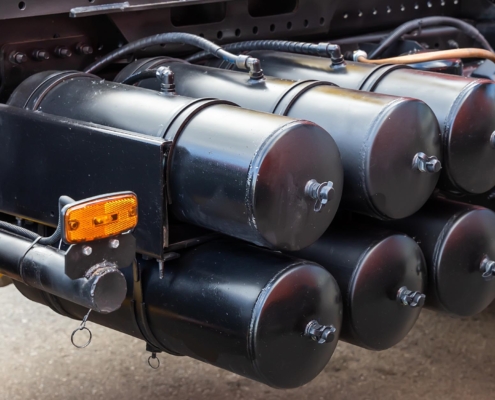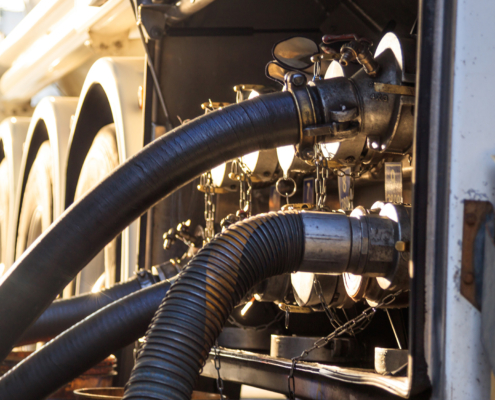
Understanding the Process of Weight and Measure Inspections
Tank trucks are the workhorses of the transportation industry. As such, they have to pass a rigorous system of inspections for weight and measures before they can be used on the roads. But what does that process entail? How is it conducted? And why is it important?
In this blog post, we’ll answer these questions and more as we dive deep into the world of weight and measure inspections. So buckle up, enjoy the ride, and let’s get started!
The Tank Trucker’s Guide to Weight and Measure Inspections
Transporting hazardous materials like chemicals, petroleum, and gas is a dangerous game, and ensuring the safety of these materials is of utmost importance. That’s why weight and measure inspections are so essential.
The process of weight and measure inspections for tank trucks involves six main steps, each of which is designed to ensure the safety of the driver, the cargo, and the general public. We’ll go over each step below.
1. Verify Capacity
The first step in the process of weight and measure inspections is to verify the tank truck’s capacity. The inspector will examine the tank truck’s fuel meter to ensure it’s rated for the volume of the cargo being transported. This is important because overloading a tank truck can lead to serious accidents on the road. The inspector will also check that the tank truck has the appropriate labeling and markings to indicate the type of cargo being transported.
2. Check Weight
Next, the inspector will check the tank truck’s weight by weighing it on a certified scale. The inspector will ensure that the weight of the tank truck, including the cargo, does not exceed the maximum weight allowed by law. This is important because an overweight tank truck can cause damage to the road and bridges, as well as increase the risk of accidents.
3. Measure Cargo
After weighing the tank truck, the inspector will move on to measuring the cargo. This is done with meter proving, which measures the tanker’s capabilities. The metering device is then calibrated to ensure that it accurately measures the volume of the cargo being transported. The inspector will compare the volume of the cargo measured by the metering device to the volume indicated on the tank truck’s manifest to ensure that there is no discrepancy.
Move Forward With Confidence
With the cost of fuel skyrocketing, long gone are the days where you got your money’s worth. That’s exactly why your meter should never register more than what was actually delivered. We do our part to stop volume discrepancies so you can stay efficient.
4. Inspect Hoses & Couplings
The next step in the process of weight and measure inspections is to check the tank truck’s hoses and couplings. The inspector will examine the hoses and couplings to ensure that they are in good condition and are the correct type for the type of cargo being transported. This is important because faulty hoses and couplings can lead to leaks and spills which can cause harm to people and the environment.
5. Check Emergency Equipment
The inspector will also check the tank truck’s emergency equipment. This includes checking that the tank truck has the appropriate fire extinguisher, spill kit, and emergency shutoff valve. The inspector will ensure that these items are in good condition and that they are easily accessible in case of an emergency.
6. Visual Inspections
In addition to the above steps, the inspector may also perform a visual inspection of the tank truck. This includes checking for any signs of damage or corrosion on the tank truck’s exterior. The inspector will also check that the tank truck’s lights and signals are working correctly and that the tank truck has the appropriate reflective markings.
Once the inspection is complete, the inspector will issue a certificate of inspection to the driver of the tank truck. This certificate will indicate that the tank truck has passed the weight and measure inspection and is safe for transport. If the tank truck fails the inspection, the driver will be required to make the necessary repairs and modifications before being allowed to transport the cargo.
Simply put, weight and measure inspections are an essential component of ensuring the safe transportation of hazardous materials. By following these steps, you can rest assured knowing you’re ready for transport.
White Tank & Truck Repair: Fueling Your Needs Since 1985
Looking to prepare for upcoming weight and measure inspections? Overdue for your annual meter proving? Good news, you’re in the right spot. White Tank & Truck Repair is a third-generation family company that provides custom, quality work for all pneumatic tank trucking devices.
Every state administers fuel quality laws to ensure the purchase quantity of motor fuels. And each year, a member of the state’s Bureau of Weights Measures will inspect and test all systems to dispense fuel. Don’t wait until it’s too late—stay ahead of failed compliance and let the experts at White Tank & Truck Repair get you prepped for the next weight and measure inspection.





